The Real Market with Chris Rising – Ep. 76 Nate Joens
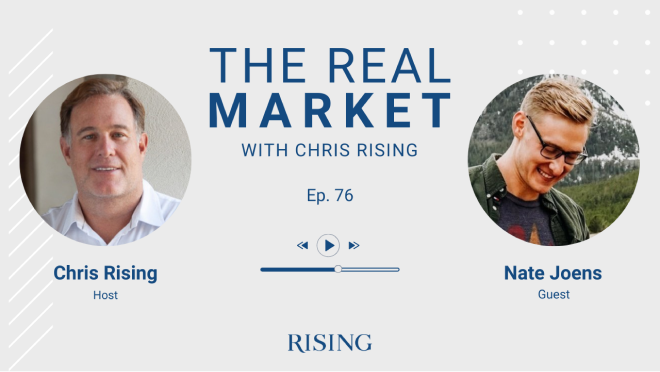
Chris Rising (00:03):
Welcome to the Real Market with Chris Rising, the only podcast that brings the real estate conference panel to your headphones. You’ll hear from superstars from every realm of commercial real estate, the biggest brokers, the most well known architects, the largest investors, and the most visionary developers. Learn what they do, how they do it and what drives their success. We’ll discuss the latest trends across regional markets, capital flows, both national and global, and we’ll explore technology’s role in shaping all of them. We’ll take a clear eye look at where we’ve been, where we are now and what’s to come. Real conversations, real experts, real insights. This is the Real Market.
Chris Rising (00:50):
Welcome to the Real Market with Chris Rising. I’m really excited to have Nate Joens with us today. He is the founder and the former CEO, but now the CIO of Structurely. I know that my audience is going to go, “Chris, we’ve been asking for AI a lot. You’ve finally got somebody with AI. Thank you.” So Nate, I’ll tell you, I get a lot of comments and a lot of people have been talking to me about what role AI is going to play in a very old and stagnant business. A business that’s been very slow to adopt technology, not only from the user side like the tenants in the buildings, but the real estate executives themselves who… You know I still do business deals with people who print out emails. I mean, so this is a slow boot. So I’m so excited to have you on. Why don’t you talk a little bit… I kind of just bowled over you there at the beginning of this thing, but I was excited that you were going to be here. Tell me a little bit about Structurely. Tell our audience what it is you do.
Nate Joens (01:50):
Yeah. Yeah, absolutely. Thanks for having me on again, Chris, excited to talk about AI and all things real estate, finance, everything in between. That’s the world I live in every day. We started Structurely about five years ago now, right out of college, myself and my co-founder Andrew. We really got our start in real estate. Mortgage, leasing, prop tech is kind of what we call it. That’s where we’re still focused today. Thinking about expanding into some near adjacent markets like insurance because everyone has the problem that we solve, which is converting leads. Every business, no matter what business you’re in, you have leads, you probably aren’t converting as many as you wish. And that’s what we do. We are a subset of artificial intelligence that we call conversational AI where we’re talking to leads in a very human-like way. We’re qualifying them, answering their questions and ultimately trying to close deals, help you and your team close more deals.
Chris Rising (02:56):
When the inspiration came, because that’s always where all these things start for, “I want to create something within artificial intelligence that helps people do something,” what was the immediate problem that you identified and said, “I think I can fix this”?
Nate Joens (03:13):
Mm-hmm. Yeah. So like I said, we kind of got our start in college, myself and my co-founder. We wanted to be in real estate somehow in college. We had no idea how. We thought maybe we wanted to be real estate investors, but when you’re in college, you have no money and you kind of need a little bit of money to get your start. So that didn’t work out very well. But what ended up happening was we talked to a lot of people in real estate. [inaudible 00:03:42] residential, commercial, lending, finance. Across the board we just talked to a lot of people and said like, “Hey, what do you do all day? What do you hate doing? What do you struggle with doing? Let me just kind of watch over your shoulder.”
Nate Joens (03:55):
It kind of kept coming up that most people in the industry in one way or the under other are sales people. At the end of the day, we’re all sales people in some regard. But especially in these markets there’s a lot of focus on sales. You’re trying to move property. You’re trying to move renters. You’re trying to just move inventory. And that inventory happens to be properties in some way, shape, or form. There’s a lot of tangential sales that come off of that like I talked about. You need a loan typically. You need insurance typically. So what we ended up finding is agents, whatever type of agent they are, spend a ton of time following up and chasing leads. They’re typically not very good at it. They typically give up after a few attempts and they’re onto the next new shiny lead because it’s easier. They think, “Ah, they’re warmer, they’re hotter.”
Nate Joens (04:54):
We kept hearing that time and time again. It’s just, “I can’t keep it straight. I can’t keep up with these leads. I can’t follow up with these leads. I need someone to do it in a really structured way to keep me accountable.”So that’s really where like the idea of Structurely came from, was how can we solve the lead conversion problem that everyone in this industry seems to face? We really wanted to figure out how to solve that with technology, not a call center. Call centers have been around for 20, 30 years. It’s not the most enjoyable job for a lot of those folks there. They typically are getting told no and a lot worse words than that for eight hours a day. It’s just not efficient. It’s not a fun job. So we thought technology, AI, at the time five years ago was probably right on the cusp where we could build a very lifelike conversation. We lucked out and found some really smart engineering, an engineering team to build conversational AI in a very humanlike way to have conversations and qualify leads.
Chris Rising (06:09):
So let’s kind of break through a couple of what things you said. Now, I totally agree with you on the call center, but I also find that sometimes, and I’ll relate this to my internet provider, Spectrum, that I’ll go to that app and that AI will come up and it’s the same thing even though I was there yesterday. I just want to scream at it and say, “I need to talk to someone.” So what differentiates what you’re doing as opposed to some of the interfaces that I’ve seen that just make you want to pull your hair out?
Nate Joens (06:38):
Yeah. I hear that so often and I’ve experienced it. We’ve probably, all listening to this, experienced the little live chat chatbot that pops up in the bottom right hand corner of the website that you know is a bot that you absolutely don’t want to talk to, but it’s your only choice so you do it and you regret it immediately. We’ve all been there and it sucks. That is not at all the experience that we’ve built. Unfortunately, it’s the experience that when people hear the word chatbot or conversational AI, that’s immediately what they go to. And that kind of sucks for us because it’s like we have to get over that hump. Now, that is not what we’ve built.
Nate Joens (07:20):
What’s especially true in any sort of real estate function, commercial real estate, residential, lending insurance, what’s especially true there is these people are buying one of the largest investments of their life. If you throw one of those really crappy chatbot experiences at them, they’ll go on to the next. Real estate agents are kind of a dime a dozen these days. They have no problem switching. Why would they through a terrible experience like that? Clearly, you don’t want to talk to them. Someone else probably does. So if you throw that experience at them, you’re going to lose them. So when we set out to build Structurely, that’s what we went into building. We said, “Okay, we’re not going to build… We’re not going to hire a bunch of humans and call it a call center, but we need the conversations to be extremely lifelike. That is paramount. Because of how important these investments, purchases, buying real estate is for these people, the conversations had to be extremely humanlike.” So we set that out from the beginning.
Nate Joens (08:30):
So first things first in terms of what’s different is all of our conversations happen over text and email, not over a little live chat widget that pops up in the bottom right hand corner. That sets us up from the start to have to be really humanlike. You don’t get the benefits of buttons and links and images as nicely as you do in a live chat in text and email. You have to talk like a human over those channels. So that was a big decision we made first out of the get go. And that’s where people are used to talking. People are texting and emailing because that’s what they do with all their friends.
Chris Rising (09:09):
Well, it’s interesting you’d say that because obviously this is going to be a generational statement. Most people that are my age or older and they’re 50 and older still want to pick up a phone, but I am amazed how many people, and I must be effective, think they can cold email me and if they hit me enough times I’m going to get back to them. They end up being right. Eventually I am. But when you look at when you’re selling this product to someone, do you get hit with that? Like, “Hey, I probably get more phone calls. I do emails or texts so I don’t need it.” How do you address that kind of generational issue?
Nate Joens (09:46):
Yeah. Yeah, absolutely. We’ve done a whole webinar series and look into… I say this because it’s a little controversial, but it’s something that gets people talking. We’ve seen that dials are dying. I think that we can all probably collectively agree that when you get a call from a number that you don’t know, you hesitate and you probably don’t answer. That has evolved a lot recently. Back in the day, people would answer those calls. It’s a lot more normal to just pick up the phone from a number you don’t know. But today we’re very skeptical. We don’t want to answer it. We’ve seen that probably accelerate really rapidly lately. And what we’ve seen is people will pick up the phone, but they need to know who it is first.
Nate Joens (10:37):
And so if you can start that conversation over text and say, “Hey, I’m here with X, Y, Z. Let’s talk a little bit over text.” And then say, “Hey, can I give you a call here in a few minutes?” Then they at least know what number that is coming from. They know who to expect even though they might not have it saved yet. So that’s the approach that we take in our conversations, is we’re not doing-
Chris Rising (10:59):
Is that lead though to people needing a personal phone and a business phone?
Nate Joens (11:03):
Yeah. So with our product, because it’s an AI talking, we actually give our agents another phone number. So we give them a local area code phone number that allows them to have these texting conversations. And then what they typically do in their scripts, which you can customize through our product, is they put their phone number, their personal phone number in that they’ll be calling at the end. So they make it to the end, like, “Hey, I’m going to have…” Well, we always frame our product as an assistant too. So we say, “Hey, I’m the assistant here with X, Y, Z company.” And then at the end of the conversation it says, “I’m going to have my associate or my team leader Chris give you a call from whatever your phone number is.” Then they’re expecting it.
Chris Rising (11:50):
Wow. So is it sophisticated enough yet where someone calls, you don’t answer, but the AI can then respond back to that phone number with a text?
Nate Joens (12:01):
Not yet, but that’s an awesome feature idea for sure. If they do call the Structurely provided phone number, it actually routes to the agent so then they can answer the phone.
Chris Rising (12:12):
Okay.
Nate Joens (12:13):
So hopefully the agent picks up, but yeah, that’s an awesome idea. Some of the things that we do, again back to how we’re not just that crappy chatbot experience, my co-founder likes to use the analogy of, those chatbots are like a train. Typically, you’re going down a script. And if you say something off script, it’s a train wreck. It says, “I’m sorry, I don’t understand” or “Start over” or human or something like that. Our product is a lot more like an ATV. We’re typically going down a path, but if you say something “off script,” we’re going to have that conversation with you and then try and steer you back. It’s typically how a lot of salespeople think too. So that’s the approach that we’ve taken.
Nate Joens (13:02):
We do a lot of other little things, like we have built-in empathy. Obviously, like in real estate or whatever industry close to it, there’s, I always like to say, the three Ds of real estate; death, divorce disease. Those are pretty empathetic things, right?
Chris Rising (13:18):
Yeah.
Nate Joens (13:18):
Why people move. So if someone says, “I’m going through divorce I need to make a move here soon, or I want to make a purchase soon.” If we just said like, “Okay. Are you approved for a loan?” That’s not very empathetic. That’s not good. So we go so far as to have empathy. “I’m so sorry to hear that. We want to make sure we’re here for you. By the way, are you approved for loan?” So we still try and have the conversation, but we’re going off script and doing things like that.
Nate Joens (13:48):
One of our favorite things that we’ve seen, and this is something that I think all sales people should steal, put typos in your messages and then correct them. So we do that about 5% of the time in our conversations is we like misspell the word the, T-E-H. And then a second later, we send a message that’s *T-H-E. And very sparingly so we look professional. But people respond to that so much more often because they’re like, “Oh, this is really a human on the other end.”
Chris Rising (14:23):
Right. Right.
Nate Joens (14:24):
Those are the little things that make the conversation go so far to feel lifelike.
Chris Rising (14:29):
As I look at how the residential brokerage business has evolved, I mean, I say this all the time, it’s the people selling houses that are having more influence on the people selling office buildings and industrial buildings, and I’ll get within the industry, “Oh, what are you talking about?” I’m like, “No, they were the first ones to do drone videos. They were the first ones to do FaceTime tours that now have become much more.” So whatever you see happening within the residential brokerage side will definitely come over to the commercial side. What have you found the experience to be for people who have adopted Structurely in terms of increased business? I mean, what are the success stories that you hear?
Nate Joens (15:16):
Yeah. Yeah, I think that’s a really good point, especially about how kind of technology funnels its way into all sorts of parts of the industry. But what we’ve seen is we typically measure ourselves on response rate and lead qualification rate. We see about 60% to 65% response rate over time. So not only do we have conversations with leads, once they respond, we chase them up to 52 times over the course of a year until they do respond. So we don’t give up, we don’t give up easily. We’re a lot more aggressive than most agents because they typically give up after the third attempt. We go a lot further than that. We see pretty high response rates because of that. And then we see about a 17% qualification rate, and we define that as basically someone who’s answered us, had a conversation and indicated they’re ready for a next step. So kind of like a hot lead, a hand raiser.
Chris Rising (16:17):
You know, a friend of mine, Tim O’Brien, who has something called Rainmaker U and he is all about branding. He makes the point over and over again that it takes six to eight contacts before someone will even choose to want to remember your name.
Nate Joens (16:32):
Yep.
Chris Rising (16:32):
So we all think so much of ourselves when we think that, “Hey, they reach out to me. I sent them stuff back. And I didn’t hear anything.” It’s because just psychologically it’s six to eight touches before they’ll even want to remember who you are. So this must be a great tool for that local agent who’s competing against the name on the billboard and things like that. Have you seen it then progressed? I mean, where do you think this continues to go? It’s one thing to return texts and return emails. Where do you think your technology is going to go as time goes on?
Nate Joens (17:10):
Yeah. I think one of the things that I like to think about in terms of AI generally is… Well, there’s two things. The first thing is kind of what I talked about earlier. I think that AI is here to reduce the mundane tasks that humans do. People don’t like sitting in call centers and being told no a million times for the rest of their life. AI can do that. It can take that on the chin. It doesn’t care if it gets cussed out and said, “Leave me alone. Why are you…” We see it all the time. People are pretty mean to the AI, but it’s fine. I think AI is here to not replace anyone. It’s here to augment our lives and help us focus on more creative things that we’re good at as humans.
Nate Joens (18:00):
I think the second thing is it unlocks a lot of new information. So the flip side of that is a lot of people say, have said, “Data is the new oil today.” That’s because data is essentially what powers AI. We have seen 6 million plus conversations. Out of those conversations, we have hand labeled 15 million messages that is a lot of data. And that data is the oil that fuels the AI. So I think that when people say data is the new oil, that’s because there is a revolution on the forefront of AI today that needs that data to power it.
Nate Joens (18:46):
But what the flip side of that is, think about all of the conversations that we’ve had. So I said that we’ve had like 6 million conversations with leads across the board; real estate, residential commercial mortgage. We’ve had tons of conversations. If you were to think about how that’s like a blob of text, basically, right? There’s a ton of information locked in, that massive blob of text, that without AI would be a black box basically. But because our product and others, other AI products, we’re not the only ones to do this, are labeling every single message in a very structured way, we can look through that massive database of raw text and say, “Okay. Of these 6 million leads, show me every lead who is ready to move in the next three months, they’re going through a divorce maybe, they’re approved for loan and they’re not working with an agent.” I could get you that answer in three seconds flat with by just querying our database. That had never been available before AI was sitting here labeling all that data.
Nate Joens (19:58):
So I think in the future we’re going to see a lot more insights, a lot more actionable insights from all of the tools that we’re using. Maybe it’s conversational AI, maybe we’re getting more insights from conversations. Maybe it’s website activity. Maybe we can parse through all of the clicks that people are making to see high intent people visiting your website. So I think our product is not prone to the revolution around, data is the new oil. I think that’s the next coming.
Chris Rising (20:37):
Well, how does a startup company, founded by some founders out of college and all that, compete when you got Siri and Google and Alexa out there? I mean, not that any of those can understand voice that well. They’re getting better. But how do you compete knowing that there are some biggest companies in the world who are coming at it from a different angle, I guess Amazon’s coming out from the same angle, but different angle. And how do you differentiate? How do you keep yourself relevant? How do you not get squashed?
Nate Joens (21:11):
Yeah. I think that with the big companies, they’re going after general AI. That’s what’s going to unlock the world for them. They want it to be sophisticated enough to hold a conversation with you endlessly about anything in the world. And then you can all of a sudden tell it “Hey, I want some dinner tonight. Can you order me something?” That’s what they’re after. They’re not after having a tiny little niche, nuanced real estate ask conversation, and that’s where they’re going to fail. They can’t get that level of granularity to have these types of conversations. If they put all their resources into it, they probably could, but that’s not what really what they’re focused on.
Nate Joens (22:06):
That’s step number one. But step number two in terms of where we’re focused is, like I said, our conversations, we’re focused on conversational AI. Our conversations are entirely customizable and we have the insights to tell you what things are working and what things aren’t. We can tell you that adding a typo increases your conversion rate by X percent. We can tell you that saying a message this way versus this way increases your conversion by this percent. And then we go so far as to help you write those scripts to make you more effective as a sales or marketing team. I think it’s a little bit more of the hand holding, “We’re here to help you in your actual niche business. We’re not a voice AI that’s trying to have general communications about anything in the world.”
Chris Rising (23:01):
How do you work in this new world of there’s options on CRMs? We happen to use HubSpot, but I know other people use Pipedrive. I think a lot of the real estate world uses Salesforce. How does Structurely integrate so that that gets all gets captured within a CRM?
Nate Joens (23:21):
Yeah, that is an awesome point. We use HubSpot too at Structurely, so props there. But we are just about to release our integration with Salesforce. We already have an integration with HubSpot and we have an integration with about 10 plus real estate kind of specific CRMs too. Those are kind of more niche ones. But our hypothesis is, our product should not have an interface really. You shouldn’t really have to log into Structurely. You shouldn’t have to manage the conversations, although you can. It should really feel like an assistant who’s a part of your team that’s just qualifying leads for you out of your CRM. It should live in your CRM. That’s what you work out of every day, every hour. You shouldn’t have another system. It should feel like it’s plugged into your CRM, and it does.
Nate Joens (24:12):
So we’ve invested quite heavily into integrating with those big CRMs, like I said, Salesforce, HubSpot, other niche CRMs to do just that. You get to see the entire conversation happening with your leads from the CRM in real time, you can take over the conversation at any time and you can send leads into Structurely to be engaged right from your CRM as well. Right from your CRM.
Chris Rising (24:38):
Wow. I mean, that’s kind of mind blowing. Yeah, not to continue to sound like the old guy on this podcast, but I mean, I think back to the days where the first thing you did as a broker was collect the pieces of paper that your assistant took or the phone calls that came in and you started calling people back first thing in the morning. And now this is where we’re at. I get why, I mean, an enterprising residential broker would jump on this or maybe someone kind of on their own commercial broker. How do you break into say the big JLLs, the CBREs, the Cushman & Wakefield that are public companies that have all the issues around public company issues and such, and just their It departments love to say no? How do you grow your business and break into some of these big companies? Is it through the CRM? Is it from the top down? How do you think you grow your business into these big ones?
Nate Joens (25:35):
Yeah, that is an awesome question. We do have a number of enterprise customers, some public, some in the Fortune 500. And so we’ve been there, done that. A lot of red tape around it, security reviews, all that stuff that we’ve checked the boxes on. But the way that we end up going through that route is exactly what you said. It’s through the CRM. Those big companies, more than small companies, are so process oriented that they dictate and mandate a certain way to use a certain CRM to all of their sales people, or not even sales people. A lot of our big customers, everyone under the sun that works for that company is in the CRM, whether they’re doing sales or not. It’s just where they work out of.
Nate Joens (26:27):
So that integration with the CRM and a lot of the cases at that level, it is Salesforce, is so important. So that’s why we’re investing heavily in those integrations to make sure that we’re not getting in the way. It’s one thing to try and navigate people in those organizations. The last thing that we should be navigating is bad tech that doesn’t integrate with the tool that they want to use.
Chris Rising (26:52):
How do you play nice and work with some of the other things that are like “We’re big users of VTS.” I knew it was View The Space, but VTS, a big fans of theirs. It’s taken them a long time to break through a lot of the big brokerage terms. But we now see in all the multi-tenant light industrial, most people are driving by seeing a sign and emailing or texting or calling or going to the website through VTS. They’re almost like not going to the broker. But how do you go to someone like that and say, “Look, we’re going to be additive to you, not take away from you.”? I mean…
Nate Joens (27:33):
Yeah, and it comes down… We have a lot of those relationships. We have a lot of partner relationships where we are integrating with lead generation companies or other types of products that aren’t CRMs, and they’re actually white labeling our product into theirs. So they have the same problem that all of our customers have. They have a lot of leads that aren’t being followed up with. And especially in the case of lead gen companies, they look really bad to their customers even when they’re not doing a bad job. If they give their customers leads, even in the case of VTS, which I’m not too familiar with, but even if in the case of them where they’re getting texted from like a sign or what have you coming a lead, sounds like they’re pretty lead generation oriented, and that lead doesn’t convert, guess who gets blamed for a bad lead? That company, even though it could have been the agent who did a terrible job of following up with that lead. And it usually is. That’s usually the case.
Nate Joens (28:38):
So we have found that same problem exists for a lot of these big lead gen marketing type companies. And they say, “Look, I just want our leads to look better and I want to qualify the leads that we are generating for our customers, so they don’t have to do it.” So they’re just building our product into theirs, and it’s worked really well. So we’re typically additive to all sorts of companies across the board, CRMs, lead gen companies, marketing agencies. The only companies that we’re not additive to are our competitors.
Chris Rising (29:12):
Yeah. Well, let me ask you this question. Maybe I should have started there, but how does somebody out of college… Were you a computer science background? How did you get out of college and get into a tech company focus on AI that focuses on real estate?
Nate Joens (29:30):
Yeah, I studied urban planning. I’m not computer science. Yeah. So it was kind of like, I think it was a good blend of both worlds. I got a lot of real estate orientation. In urban planning you have to obviously be really oriented around that. But then it was also very tech oriented. I minored in GIS, which is geographic information systems, which is basically just mapping on steroids. So that’s where a lot of the tech side came in. I think it was, looking back on it, a perfect blend of what I’m doing today of real estate and tech. So that’s kind of how I ended up here I would say.
Chris Rising (30:12):
How good are you on writing code?
Nate Joens (30:14):
Very bad. That is not at all what I do. We have very, very good engineers to do that because that’s what they specialize in.
Chris Rising (30:23):
So you had the idea, you and your partner had the idea, how did you go about starting to create the product?
Nate Joens (30:28):
Yeah, it was, like I said, to mostly recruit those engineers to start. We had to kind of get them to believe that there was a problem worth solving. We didn’t have a lot of money. We did get some angel investment to start after we… I built the very first version of our product in a very terrible way, but it was at least demoable enough to get some real estate brokerage is interested, and they were actually some of our first investors back in the day. So that was really kind of the start to give us enough money to get the engineers on board to actually build the thing out the right way.
Chris Rising (31:09):
Yeah. Have you gone through multiple rounds? Where’s the company sit today? How big and how is it financially?
Nate Joens (31:14):
Yeah. Yeah, we have gone through multiple rounds. We’re in the process of our series A fundraising right now. We are up to about 40 employees, half probably full-time, half part-time. So yeah, we’ve been growing pretty well.
Chris Rising (31:32):
I hesitate to ask as somebody whose company owns a lot of office space. I’m going to bet that you guys are probably virtual. Or do you guys have office space?
Nate Joens (31:42):
We unfortunately just did not renew our lease. So we did have office space here in Ames, Iowa. Decided not to. Decided we want to hire some of the best talent from across the country. We don’t want to mandate people coming into the office. We’re not like a lot of other companies that maybe that makes sense, I know like Elon Musk just came out and said yesterday that he needs people in the office, which makes sense when you’re building rockets and self-driving cars. We’re not building rockets and self-driving cars so remote work works for us.
Chris Rising (32:21):
So let me ask you this. How do you create a culture that is supportive? So you don’t hire a bunch of mercenaries who are going to leave the second somebody offers them more money if there’s not the interaction. Have you guys thought about using short term space or using Airbnbs to have quarterly events? How do you think about culture?
Nate Joens (32:44):
Yeah. Some of our employees around central Iowa do still go to a co-working space. They like the office. They like being around people. Sometimes I do as well go into the office. But yeah, we’ve put a lot more emphasis on quarterly retreats with the company. So last quarter we went to Disney World Orlando. Oh, wait. Yeah. Disney World. That’s the one in Florida, right?
Chris Rising (33:11):
Yep.
Nate Joens (33:12):
I always get them confused. So that’s where we just were. And that was awesome. We spent, I think a week down there meeting for a lot of the time, but also going to the parks for a lot of the time and just hanging out at hotels a lot of the time. So I think that the thesis there is we’re going to be together for short bursts of time, but really productive in those times. I think that coming out of that, everyone was really energized. It was really well run. Everything was perfectly organized. We have an amazing event planning team apparently who can do those. But I would say that we still came out of that with initiatives. We have Q2 initiatives that we came out of that that we’re still working on today remotely. So I think that it helped us align in a short burst and gave us the freedom to focus on those for the next quarter until we meet again.
Chris Rising (34:12):
Let’s really dive into this. So in order to do this, you have to have an ecosystem. So is that ecosystem Microsoft and PC based stub? Is it Teams? Are you more Google based?
Nate Joens (34:27):
Yeah. We’re all on the-
Chris Rising (34:28):
Are you [inaudible 00:34:29] management? Within Microsoft? Asana? Think of all… Slack. I mean, break it down. So if somebody were to… you’re saying, “This is a great place to work, let me tell you how we do this,” How do you do it?
Nate Joens (34:41):
We run our lives on Slack and the Google Suite, I would say. So I would-
Chris Rising (34:48):
Have you liked the new Google workplace? We’re on that too. It’s good.
Nate Joens (34:51):
Yeah. It’s not bad. Our CEO sometimes refers to Google as the Google dumpster. I’d say our organization system maybe has some to be desired. Sometimes I agree. Sometimes I make things and then it gets lost forever in the Google dumpster. But it works if you have someone constantly trying to keep it organized. I think the one little hack I would say that we found works really well for the company through Slack is their Huddles feature. There is almost nothing to replace the little mini random conversations that you have when you pass someone’s desk in the office.
Chris Rising (35:33):
Thank you. I agree with that. Yeah.
Nate Joens (35:34):
Yeah. Huddles are the closest thing to doing that in Slack. So you can just click on someone’s name, click a little one button and you’re talking to them like you’re there. It feels to me like that’s the closest that we can get in a remote work environment to those little passing conversations.
Chris Rising (35:53):
We’ve seen with our team that people will hit the Google Meet button, do a real quick conversation. They’ll create teams or what would be huddles, and then there’s the one on one. We consciously made the decision not to use Slack because it just felt like there was too many channels. I have Slack, but I use it for my kind of philanthropic stuff. And boy, people just don’t respect.
Nate Joens (36:19):
Yep.
Chris Rising (36:20):
So we’ve had to police that a little bit. We don’t use that internally. But then how do you look at project management? Do you use Asana? If you’re Google Suite, Google workplace, I assume Asana.
Nate Joens (36:30):
Yeah. We actually use JIRA for a lot of that.
Chris Rising (36:34):
[inaudible 00:36:34].
Nate Joens (36:34):
So we are using Jira, Confluence, the Atlassian suite. So it’s a little bit more product oriented as a software company instead of project oriented. So that’s kind of what it’s worked for us.
Chris Rising (36:51):
Yeah. And you saw their CEO when after Elon Musk too? I don’t know if you saw that.
Nate Joens (36:55):
I didn’t see that. I’m going to have to go look that up.
Chris Rising (36:58):
Side comment. But let me ask you this, how do you monitor productivity and how do you monitor that people aren’t using hardware you provide in ways that are inappropriate?
Nate Joens (37:12):
Yeah. It’s not really my job anymore. That is one of the things that I will say is, like you mentioned early on, I was the CEO. We decided about a year and a half ago to bring in someone who’s been on our board since the beginning as our CEO. He’s a long time technology CEO himself so it made sense. He knew the company, he knew me and my co-founder. And he’s seen the movie before. So we brought him on. Now it’s kind of his problem to figure out productivity. We’ve hired, I’d say really good management who’s worked remote before. So we’ve kind of implemented a few different systems. The system that we use in terms of like meeting cadence is the… Oh, I just forgot it. Entrepreneurial system, something like that.
Chris Rising (38:07):
Oh, EOS. We use EOS too.
Nate Joens (38:08):
EOS. EOS. Yeah.
Chris Rising (38:09):
Yeah. Gino Wickman’s book, Traction. Yeah. We’re big into… We in fact took all the instructional videos from Asana and created our own interactive PDF that implements EOS into Asana.
Nate Joens (38:25):
Yeah. That’s awesome.
Chris Rising (38:25):
We’re big believers in that.
Nate Joens (38:27):
Yeah. That was new to me. Structurely is my first and only job I’ve ever worked. So all of these process oriented things were new to me. So that’s worked really well I’d say. There’s always a balance of too many meetings and making sure the meetings are productive, that I think everyone always tries to find that balance in.
Chris Rising (38:46):
I think one of the best things that Google has, I know Microsoft has it too, is you can start seeing in your day how much time you’re spending in a meeting.
Nate Joens (38:54):
I’ve seen that. Yeah.
Chris Rising (38:55):
Yeah. And then we IDs that. Some of my managers are spending nine hours in a day in meetings. That’s, “Okay. Yes, you’re babysitting. That’s not necessarily managing.” It’s a good tool.
Nate Joens (39:10):
Yep.
Chris Rising (39:12):
But what we haven’t done, and I’m anxious to hear what your answer to this, is as you go international to bring in team members, how does that change the workflow? How does that change the productivity? And how does that change the responsibilities?
Nate Joens (39:26):
Yeah. That is a question I haven’t thought a lot about. Hopefully our CEO, Cliff, has. I know there’s a lot more products out there to help manage. I think one is called like Deal or Deed or something like that to manage international workers. It’s not something we’ve explored yet, but I do realize that there’s definitely talent especially in the AI world from overseas too that might be worthwhile. We have worked with agencies from overseas before.that’s been hit or miss just to be honest. So I think that the communication part is really hard. One of the things that works really well with Slack too is obviously bringing in agencies or others who aren’t a part of your organization and keeping them there like they’re a part of your team. I think just integrating them, integrating whoever it is, an agency or not an agency from overseas, into all the systems that you use is something you just have to do.
Chris Rising (40:29):
Yeah. Let’s go back to the product. As you sit and look at it where it is today, and you’ve got your Q2 things that we got a month left on, but what are some of the key things you think you need to develop as a company in terms of product so that you’re staying ahead? What are customers coming back and saying, “I like the product, but it needs help here and there.” How are you trying to address it?
Nate Joens (40:52):
Yeah. I was just on a customer discovery call this morning, kind of asking these same questions. It’s been ringing in my ears for a while, but what just kind of got dinged in my head again today, agents and people, I would say from the prop tech space, those that manage themselves and are in business for themselves typically find this the most who are commission oriented. Their paycheck comes from them and them only basically. For whatever reason, they don’t like to use calendars as much as they probably should. It’s hard for me to understand because software companies, especially remote, you literally live and die by your calendar. If it’s not on the calendar, I have no idea that it even exists. I couldn’t function without it. So when I hear that, it’s really hard for me to understand. But I think that when you think about a product like ours that’s trying to convert leads in a sales capacity, what everyone is trying to get to is an appointment. You’re trying to get an appointment to close a deal in some regard. You have to talk to someone, either in person or on the phone.
Nate Joens (42:05):
So what we’re trying to focus on is trying to actually get agents to let us put meetings on their calendar and then to actually go to those meetings and call the lead, whether it’s in person or just on the phone. I think that it’s becoming… Like, this is a bigger than Structurely thing, the world of Calendly in the pandemic internet, like those were how people live. “Here’s my Calendly link. Schedule some time.” So I think that’s where we’re really focusing on doing next, is to date we’ve been really passive because we didn’t want to anger people and say, “When are you available to talk should our agent want to talk to you at that time?” That’s basically how we’ve had conversations, but now we’re trying to move the needle and say like, “We’re going to get a time that works for both agent and lead and put it on a calendar. We’re going to hope that you guys go.”
Chris Rising (43:07):
You know, what’s interesting is I think there’s some generational things here. I think there’s some personality things here. I mean, I know where you stand on [inaudible 00:43:14] is it offensive if you get a Calendly link saying, “Find it.” Whereas some people get really offended.
Nate Joens (43:19):
Yep.
Chris Rising (43:20):
But when we’ve talked about it and why I still, as you’ve gotten to know my assistant Daniel, is I still like the personal touch the human being gives. But I think the wave is going to come and get people, but it really comes down to the idea that I’m losing freedom. I think these entrepreneurial people who push themselves and all that, don’t want to be told that somebody’s scheduled a meeting without me saying yes. Now their response back is, “Well, no, you gave five times on a calendar and they picked one.” But I still didn’t say yes to that time.
Chris Rising (43:58):
And that’s, I know for me, it’s… Sometimes I’ll look at my calendar, even though I have a wonderful person doing it, and I’ll be like, “Did I say yes to that time?” So I think that’s the… But I think the wave has already started. And if you don’t do it, you’re just not going to get the business. I just see it. I see this efficiency coming and I think it does scare people. You brought this up at the beginning. It’s a lot easier just after the third try not to call someone back and go on in the new one. That we’re going to get to this point where the AI takes care of that grunt work that we got pleasure out of, pushes through when we might quit. And now you got to have the one on one meeting with someone you may not know or like.
Nate Joens (44:43):
Yeah. Yeah. Yeah, it’s definitely kind of coming back to what I said earlier. I think AI is here to augment our lives to take off the mundane work that we shouldn’t be doing. Whether we like it or not, we shouldn’t be doing it. We, as humans, are to the point where we should be doing the creative work that we’re really, really good at individually. And I think whether it’s our product or other AI, there’s tons of different AI out there that’s doing that. Even think about self-driving cars, a super futuristic idea. Driving is a mundane task. Think about how much more productive and creative we as humans could be if we didn’t spend two hours a day driving.
Chris Rising (45:24):
Yes. Very true. Very true. So as you look at where you are, you’ve come out of college, you’ve built this company. You’ve been able to do it and a place you like to live. It’s not like the old days where I guarantee it… And when I say old days, five years ago to do this, somebody would’ve said to you “Get your butt to San Francisco” and “That’s the only place you’ll get funded.
Nate Joens (45:47):
Yep.
Chris Rising (45:49):
What do you look at at the world now and say… Do you think we live in a place now where you can build a big business sitting there where you’re living in the Midwest? Or do you think at some point it’s going to force you to be next to [inaudible 00:46:05] in Pacific Heights?
Nate Joens (46:06):
Yeah. I think people will continue to build big businesses from wherever they choose. The internet is everywhere. If you build an internet company, I think you can build from really anywhere. I think there’s definitely a lot of specific things there that need to be accounted for. If you have factories, you have to be centralized like Tesla and all of them. But I think remote is here to stay to a degree. I am a believer though that humans are cyclical and just like fashion. Fashion comes and goes. I think that we are soon going to go through a cycle where it’s really fun to live in the city and go to the office again. I’m kind of excited for that time, because sitting at home, not seeing people for a week is kind of sometimes boring. But that said, I live in the Midwest and I love the country. Sometimes I just want to go out into the trees in the woods and leave people forever. But I think that to a degree, cyclically, humans will come back to wanting to be in offices probably in five to 10 years again or something.
Chris Rising (47:24):
Yeah. I bet you it’s sooner. Only I say that because you tell me any good sitcom that didn’t have like a Metro area where it all happens. So I think a bunch of millennials are going to sit there watching reruns of Friends, going, “God. I used to like it when I could go to the coffee shop and make new friends,” but we’ll see. But I do agree. I think you got a great perspective. I think things have in flow. I think it’s a lot like fashion.
Chris Rising (47:47):
I think the hardest thing that… You’re closer to Gen Z, but definitely millennial, my generation, Gen X, is still so influenced by a generation that, I don’t mean to be rude, but isn’t that relevant anymore. The baby boomers. We’re kind of stuck at the top end. And I say to people all the time, “If you hold onto these things, that’s this idea that you’re only a business person if you weren’t a suit and tie and hard soled shoes and you’re only a business person if you show up at the office at 7:30 in the morning, you’re going to get steamrolled.”
Nate Joens (48:15):
Yep.
Chris Rising (48:16):
I think your product is one of a number of things that just shows hard work isn’t enough, because you can be the one person who calls back seven times, but now your competitor who you would beat out has an AI who will do it. So now how you going to be creative to win business?
Nate Joens (48:35):
Yeah. Yeah, absolutely. That’s a really interesting way to look at it.
Chris Rising (48:39):
Yeah. Well, Nate, I really enjoy this conversation. I wish you nothing but success. I’ve already texted our head of investor relations saying I want us to look at this software as these leads come in. We’re doing a lot differently than we ever did it. We’re doing crowd funding and things like that. These lead closing things are huge. So I got a lot out of it just in this discussion and I’m really appreciative that you would come on the Real Market.
Nate Joens (49:03):
Yeah, absolutely. This has been a blast. I got to talk about a lot of things that are near and dear to my heart and that are fun to talk about too, so I appreciate you having me on, Chris.
Chris Rising (49:12):
All right. Well thank you so much.
Nate Joens (49:14):
All right.
Chris Rising (49:15):
Really appreciate it.
Nate Joens (49:16):
Yep. Thank you.
Chris Rising (49:19):
And please don’t forget to follow us. We’d really appreciate it if you subscribe to the podcast. You can do that on Apple iTunes or any of the other podcasting services. It’s the Real Market with Chris Rising. Follow us on Twitter @ChrisRising or @RisingRP. And please follow our blog. chrisrising.com or risingrp.com. Thanks so much.
Speaker 3 (49:44):
This episode of the Real Market is brought to you by Rising Investor Platform. The platform provides accredited investors with exclusive real estate investment opportunities on a deal by deal basis across various asset classes, including office, industrial, hospitality, multifamily, and data. The platform also provides an inside look at deals in our pipeline while giving investors the chance to indicate interest before it’s too late. We recently funded our acquisition of 9320 Telstar, a mixed use office industrial property in El Monte, California using our investor platform. To learn more about how accredited investors can join the Rising Investor Platform, please visit risinginvestorplatform.com.


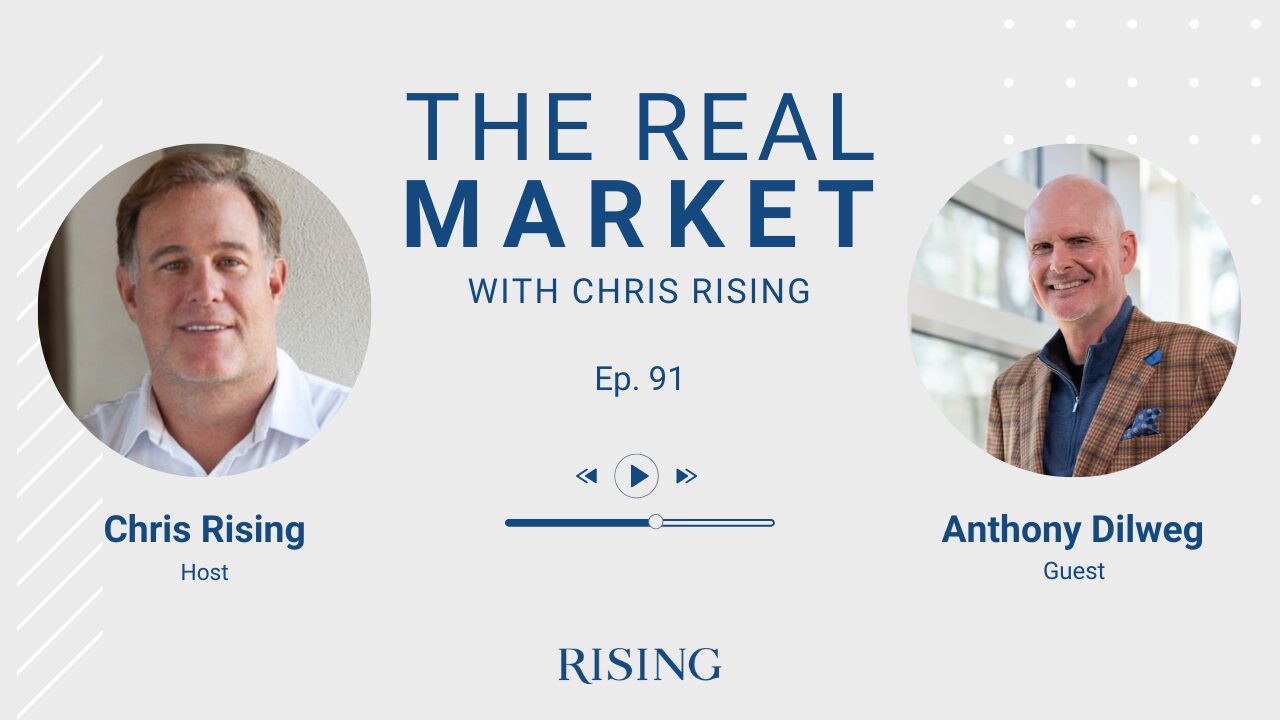



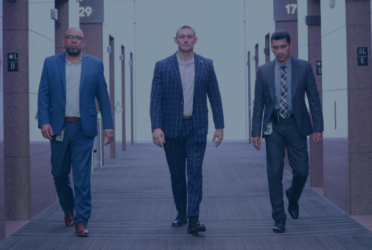

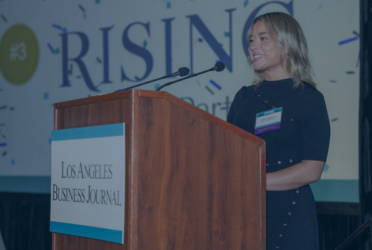


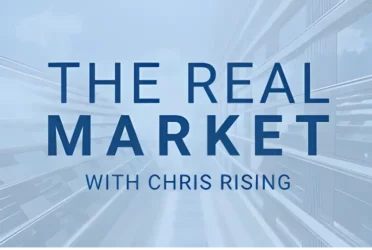 Podcast
Podcast